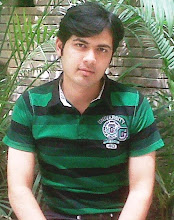

It is very
heartening to see that education has finally started to attract the attention it has always deserved but was given an inexplicable short shrift especially in the
last 20 years or so. While India talked about financial and other reforms, the education sector actually saw even more
regressive policy steps and more stifling of efforts to create high-quality capacity from
primary schooling right through post-graduate studies.


At this time, there is a lot of optimism about the reforms in the
education sector. Hopefully, many of the progressive reformist measures articulated by the
Union HRD minister since his induction into the Cabinet last year will see their implementation in the current year itself, creating the right policy framework and
operating environment for attracting large investments into the sector. Indeed, India’s challenge in the education sector, as it is in all other social and physical infrastructure sectors, is mind-boggling. For a population that is likely to touch almost
1.2 billion by the time the next census begins in 2011, India needs — just to illustrate this humungous challenge — over
1.5 million qualified doctors. Against that, we have no
more than 550,000 and of this small number, probably 30 per cent or more may be concentrated in the four metros alone. The current annual capacity for
MBBS seats is less than 40,000. India’s gross enrolment ratio (number of students in colleges) is just above 10 per cent, while the same for developed nations is over 50 per cent. Just to increase this
ratio to 20 per cent in 10 years will require a near doubling of higher education seats in India (the school-going population would have increased by more than
100 million in the next 10 years), needing an investment of more than Rs 480,000 crore. Not only this, 45 per cent of all higher education seats in India are allocated to humanities and arts compared to 3 per cent in Brazil, 14 per cent in China, and 4
per cent in Russia. Not surprisingly, India is way behind in seats available for technical and business/manufacturing-oriented education compared to developed or major developing countries. And finally, while justifiably, a lot of attention is focused on primary education and higher education, and relatively less attention is given to those estimated
400 million out of about
460 million jobs which are skill-based and which require vocational training. Less than 6 per cent of this huge mass of workers receive any form of vocational training. The current landscape of vocational training in India comprises about 5,500 industrial training institutes and
about 1,750 polytechnics. China, having a population not much bigger than India’s, has over 500,000 such institutes.
While this infrastructure is being created, it is now also important to start giving serious attention — through policy framework — to the 4 A’s:................
Read more...


















































